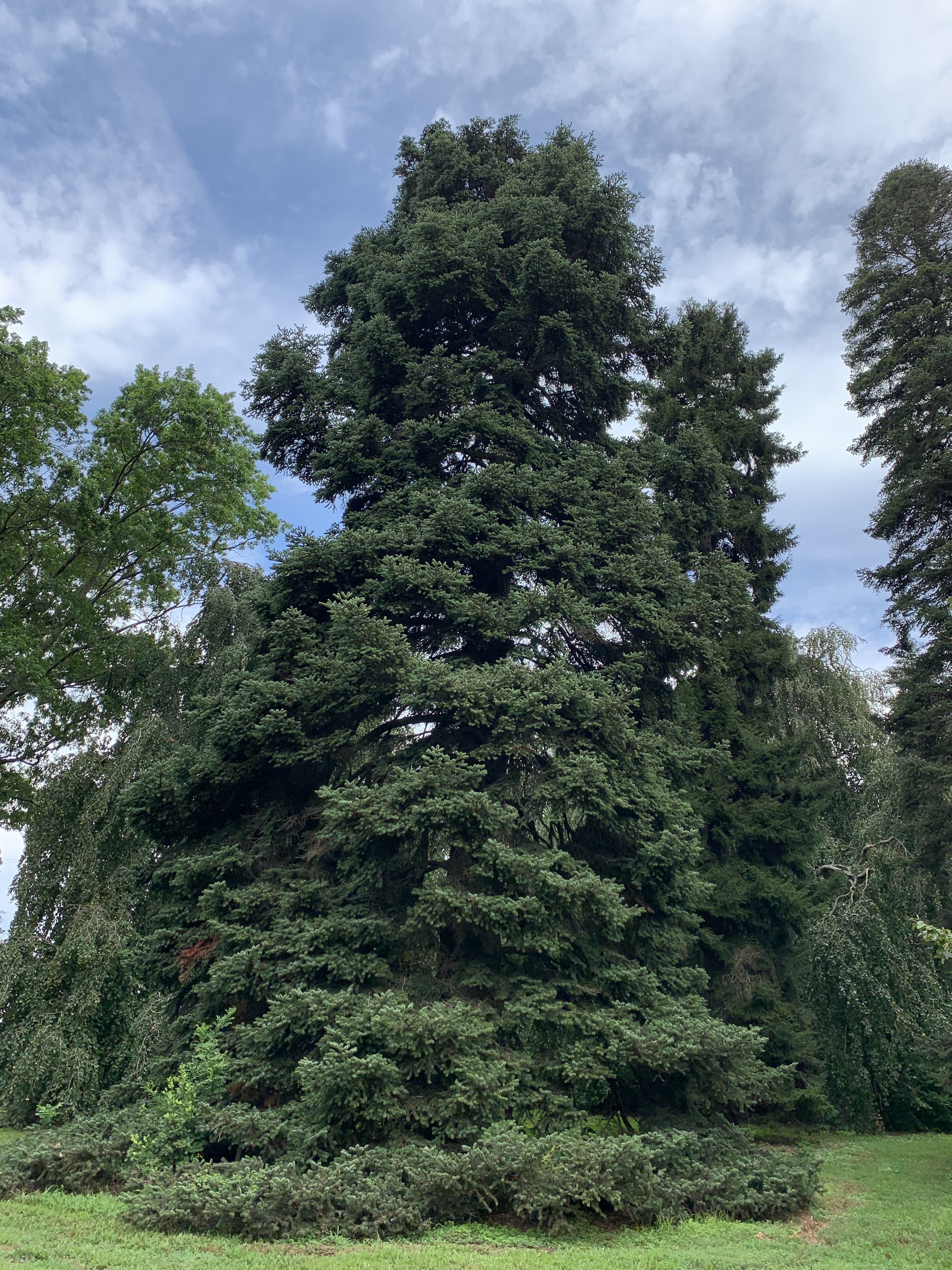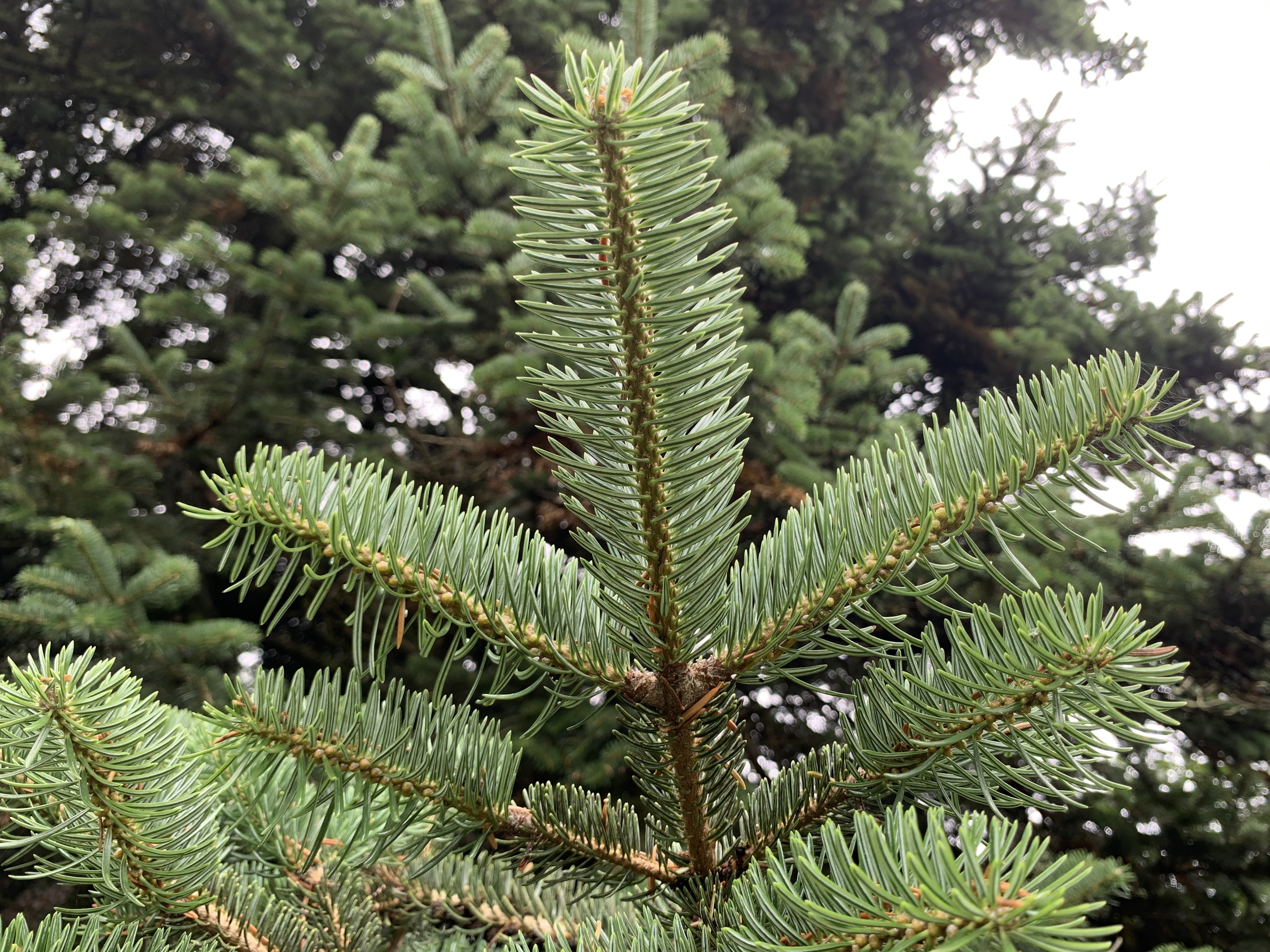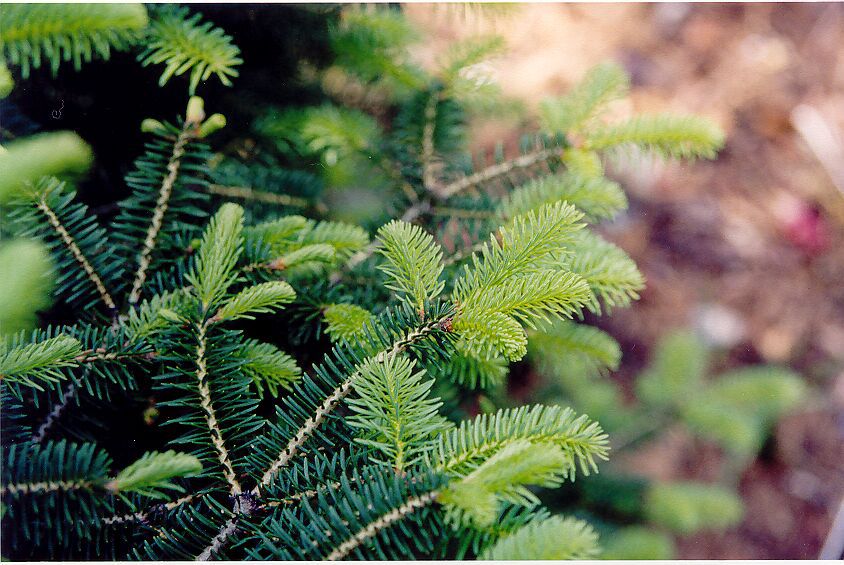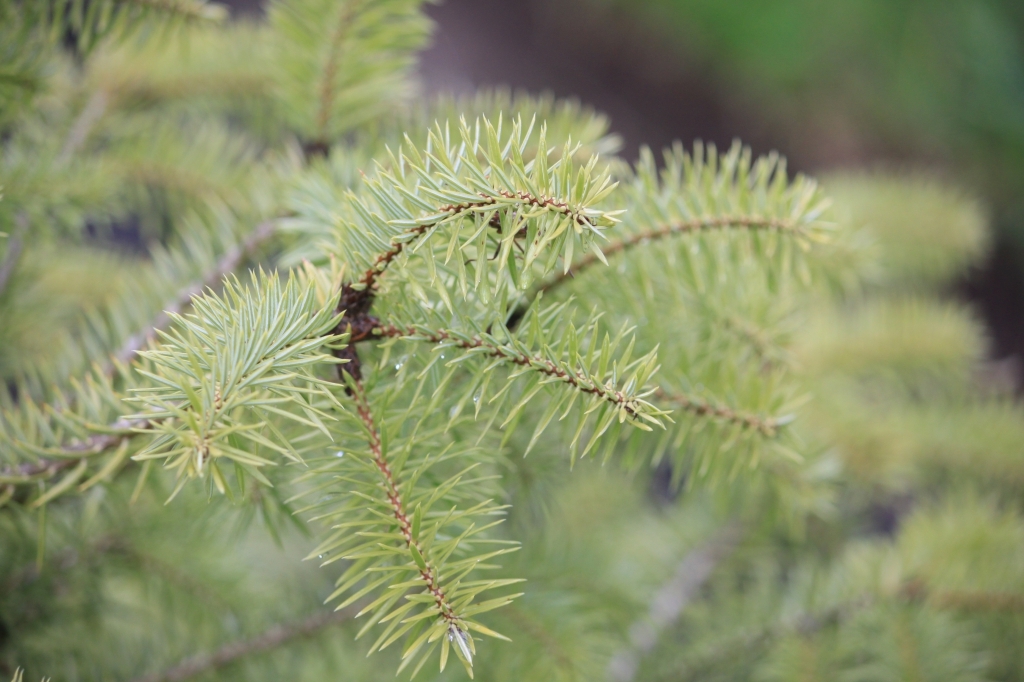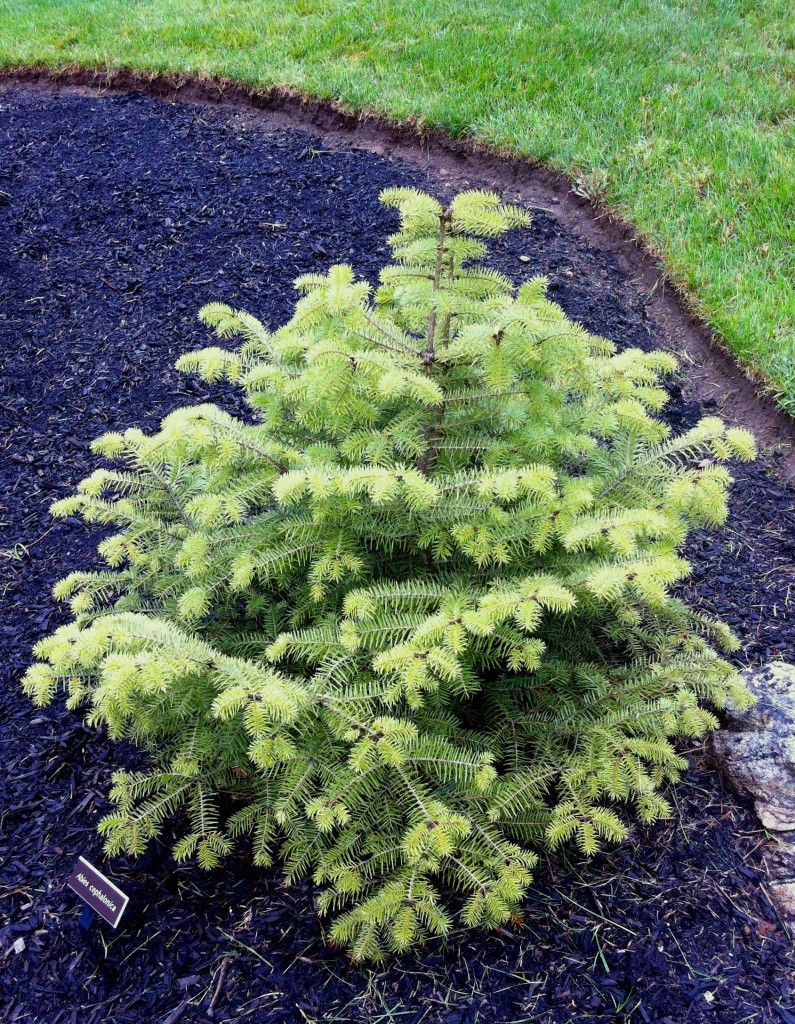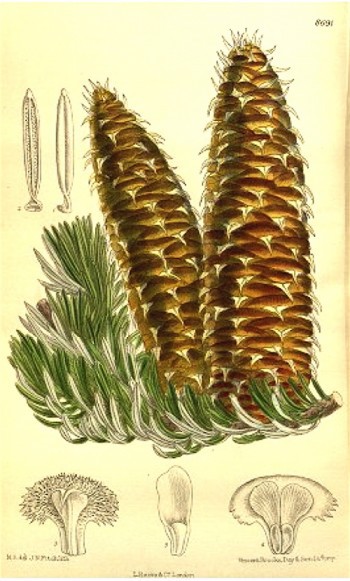
[Arthur Jacobson in North American Landscape Trees ] GREEK FIR. CEPHALONIAN FIR. BLACK MOUNTAIN FIR. MT. ENOS FIR. From mountains of Greece, S Albania, and the isles of the Aegean Sea. Seeds collected on Mt. Enos of the Ionian Island Cephalonia were sent to England by Sir Charles Napier (governor of Cephalonia at the time) in 1824. So named because it formerly formed an extensive forest on Cephalonia---the largest of the Ionian Islands. To North America before or around 1850.
Abies cephalonica, as described in 1838 by John Claudius Loudon (1783-1843), in Gardener's Magazine and Register of Rural and Domestic Improvement, 14th edition, is commonly known as Greek fir, as well as Κεφαλληνιακή ελάτη (Kefalliniakà eláti / Cephalonian fir) in the Greek language. It is closely related to Nordmann fir (Abies nordmanniana) to the east in northern Turkey.
Description. Greek fir is a large, evergreen coniferous tree that grows mature heights of 80 to 115 feet (25 - 35 m), rarely to 130 feet (40 m) tall and with a trunk diameter up to 3 feet (1 m) wide, measuring at breast height.
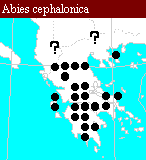
Distribution. This species is native to the mountains of Greece, primarily in the Peloponnesos and the island of Kefallonia, intergrading with the closely-related Bulgarian fir (Abies borisii-regis) further north in the Pindus mountains of northern Greece. It occurs at elevations of 3,000 to 5,500 feet (900 - 1,700 m) above sea level, on mountains with annual rainfall of over 40 inches (1,000 mm).
Hardy to USDA Zone 5 - cold hardiness limit between -10 and -20ºF (-28.8°C and -23.3°C)
[Jacobson] An immense species, combining hardiness, drought-tolerance, and insect-resistance. Its very strengths make it a horticultural drawback: it grows to such size as can rarely be allotted it. Needles long, usually sharp, flushing early and subject to damage from late frosts in some locales. Twigs hairless. Buds resinous. Cones 4 inches (10 cm) long; brownish; bract tips projecting, recurved. Records: 136 x 11 feet Bodnant, Denbighshire, Wales (1981; planted 1876); in Cortachy Castle, Angus, Scotland (1962).
